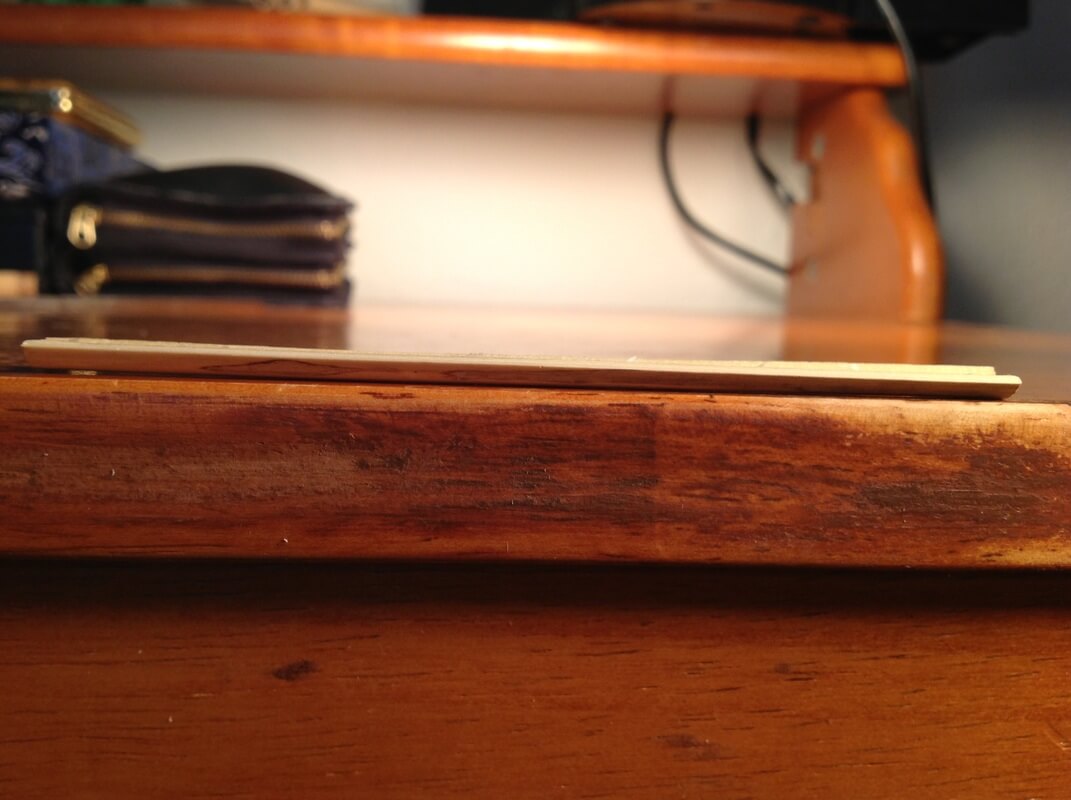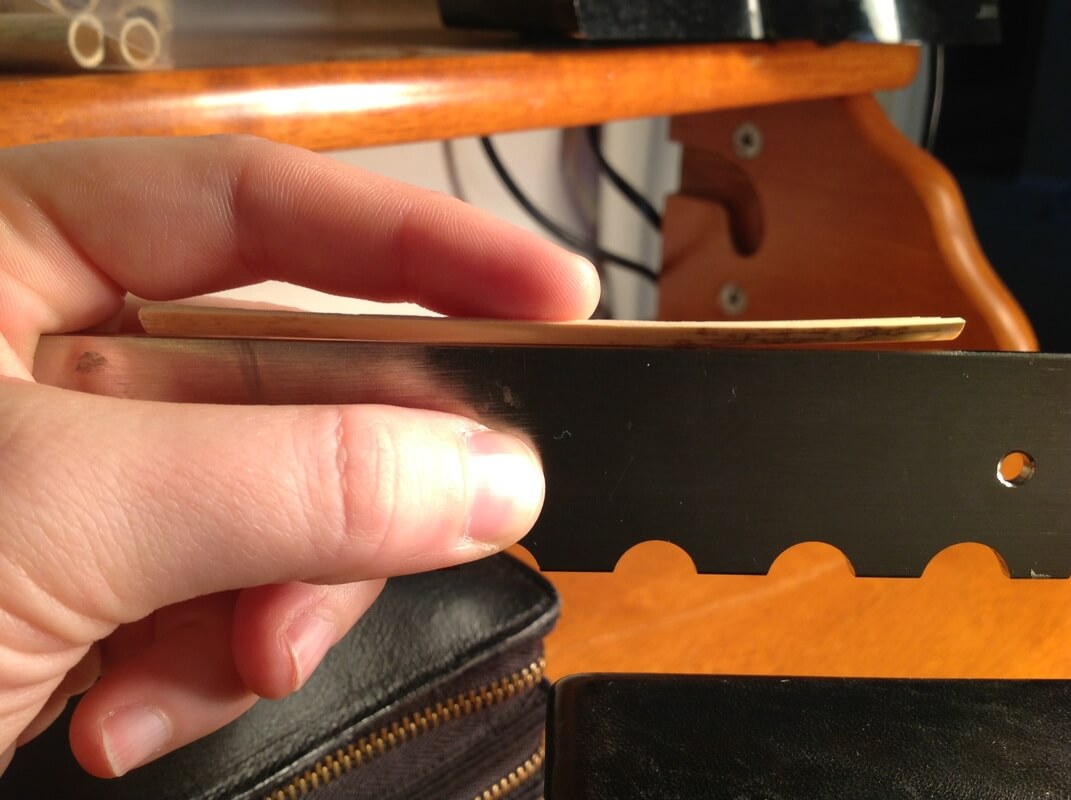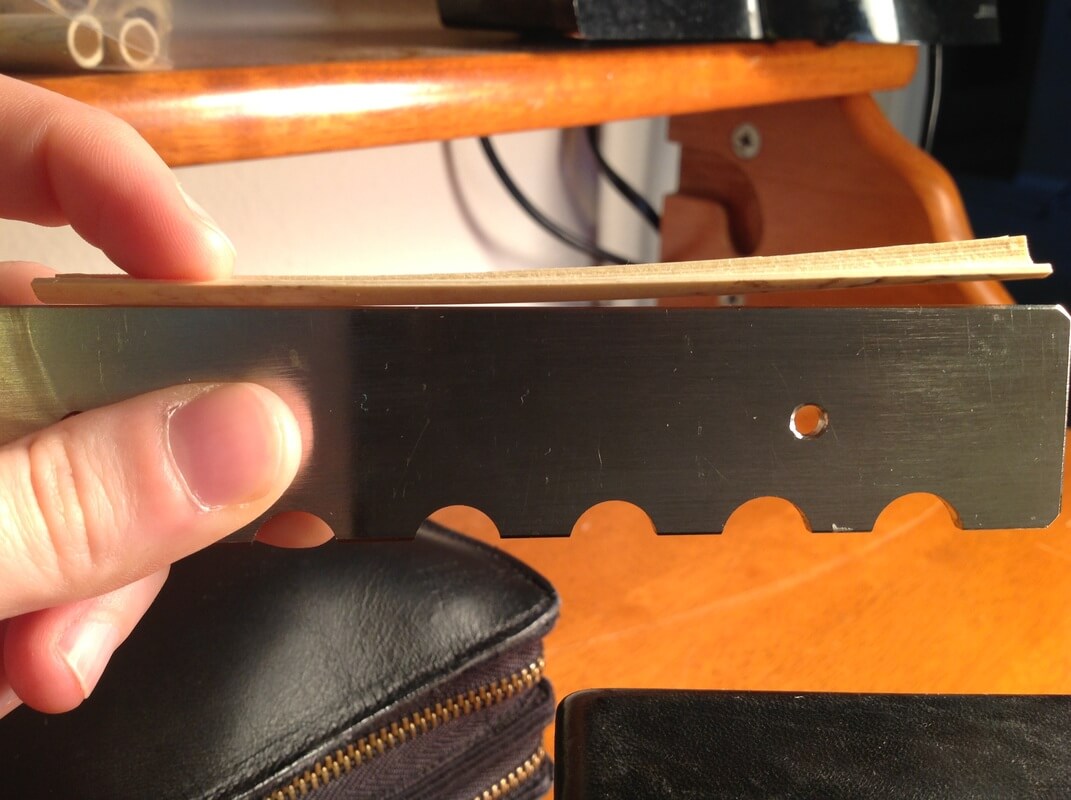This installment on cane processing will help ensure that your next bonfire is bigger than ever! How many times have you heard that a good reed comes from cane that is flat and straight? What does that really mean? How flat is flat enough? Is any amount of curve or bend acceptable?
For those of us with limited resources, the answer to the latter is yes. Inevitably, a lot of cane will be thrown away, but only using perfect pieces of cane is prohibitively expensive for budding musicians. It is okay to test the boundaries of what you can functionally use and what your gouger can still process. Some gougers will take care of the problem for you, but there are some machines on the market that will gouge anything, and that requires more discipline and discerning from the reed-maker.
Did you like our last case study? Well, hopefully you did since we have another informal assessment.
When a tube of cane is split, it is almost always longer than a piece of cane should be, so it is shortened with a guillotine. The great thing about using a guillotine is that you can basically choose what part of the cane you want to keep. You can chop a little off of both sides if the piece of cane is slightly bowed on both sides, or if one end of the piece of split cane is acceptable and the other is not, you can cut the excess off of one end of the piece of split cane and leave the other alone.
With this in mind, we have some examples of split pieces of cane that need to be guillotined:
For those of us with limited resources, the answer to the latter is yes. Inevitably, a lot of cane will be thrown away, but only using perfect pieces of cane is prohibitively expensive for budding musicians. It is okay to test the boundaries of what you can functionally use and what your gouger can still process. Some gougers will take care of the problem for you, but there are some machines on the market that will gouge anything, and that requires more discipline and discerning from the reed-maker.
Did you like our last case study? Well, hopefully you did since we have another informal assessment.
When a tube of cane is split, it is almost always longer than a piece of cane should be, so it is shortened with a guillotine. The great thing about using a guillotine is that you can basically choose what part of the cane you want to keep. You can chop a little off of both sides if the piece of cane is slightly bowed on both sides, or if one end of the piece of split cane is acceptable and the other is not, you can cut the excess off of one end of the piece of split cane and leave the other alone.
With this in mind, we have some examples of split pieces of cane that need to be guillotined:
Case No. 1
After years of practice, you can probably just look at a piece of split cane and decide what part to keep, but the rest of us need to put the cane on a flat surface so we can discern the structure of the cane. You can use the base of your guillotine, the back of a radius gauge, or you can use your desk. It doesn’t matter what you use as long as it is flat and you can get eye level with the cane. The process is similar to measuring liquids. You can’t look at the cup from above and tell if you really have 1 and 1/3 cups of milk. You need to be at eye level with the measuring cup to know for sure.
We are in luck with our first piece of cane! It has a slight curl at one end, but most of the piece is flush with the desk.
Case No. 2
We are in luck with our first piece of cane! It has a slight curl at one end, but most of the piece is flush with the desk.
Case No. 2
This piece has one major flaw, but the bowing only occurs at the right side of the piece of cane. The left side might be usable. A closer look at the left side reveals a slight bowing. There is a little daylight between the cane and the flat side of the radius gauge. This is one of those gray areas that we mentioned earlier. The left side of this piece isn’t horrible, but it isn’t the best piece of cane ever. Again, there is no steadfast rule. Practice and preference are your litmus test in this situation.
Case No. 3
Case No. 3
This piece of cane has two things working against it. Almost 75% of this piece is bowed, but it is also twisting. Twisted cane can be an indication of a bad piece of cane, but it can also be a sign that your splitter is dull. Splitters need to be sharpened or replaced just like razor blades and reed knives. They will not stay extremely sharp your entire career. It would be to your advantage to discard this piece and add it to your bonfire collection.
Case No. 4
This piece is an example of a piece that could end up being a good reed, a good practice reed, or a great reed for a student. The significant bowing is limited to a small portion on the right side. Without something to compare it to, this piece might appear flat, but the left side of this piece is not completely flush with the radius gauge. This is another gray area decision for some people, but I have probably already made a reed out of this piece.
Now you have seen the good, bad, and the ugly as far as cane is concerned. Hopefully, you can use the information to make informed judgments in your own cane processing adventures.




